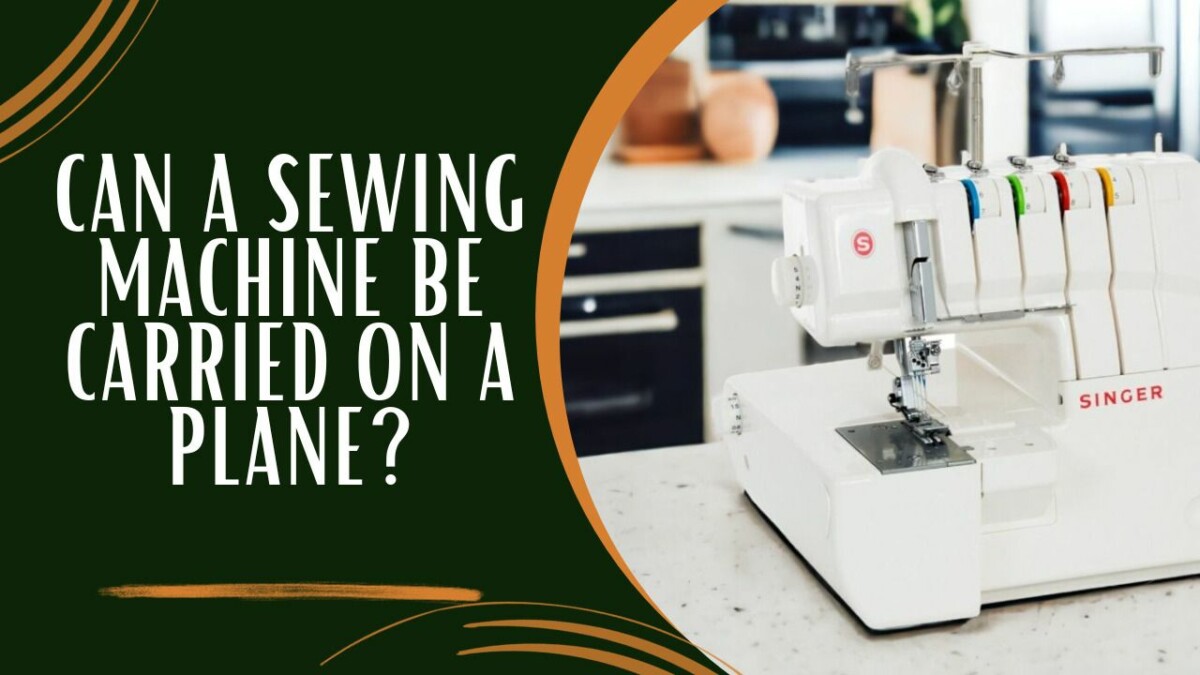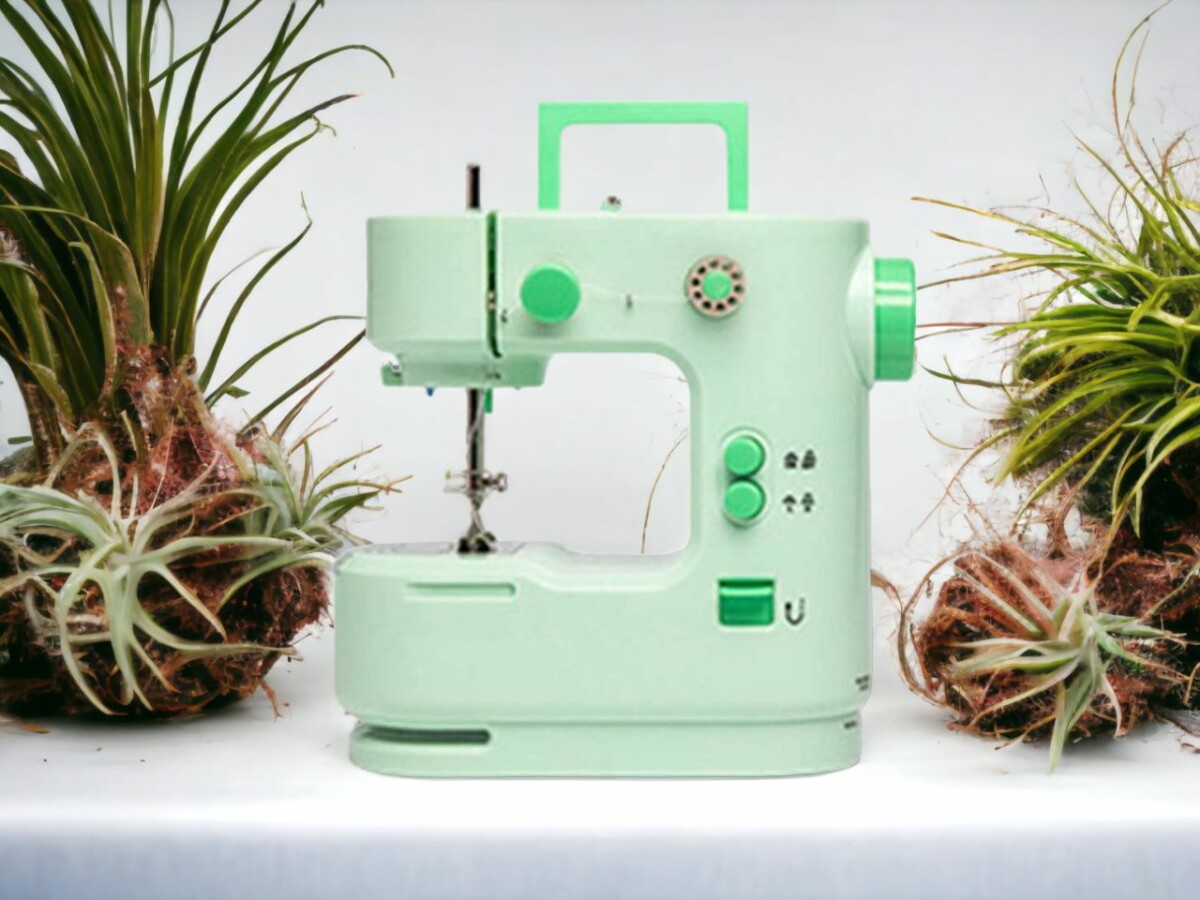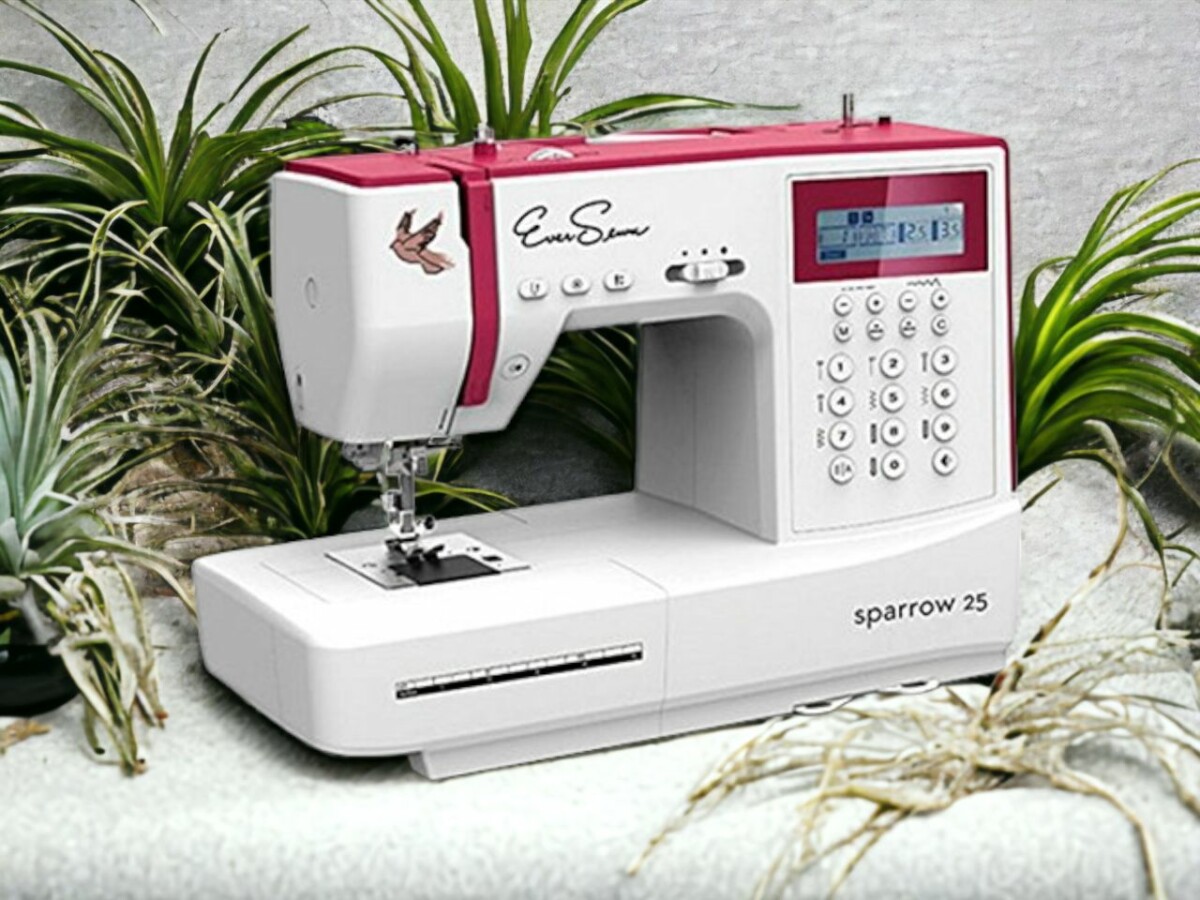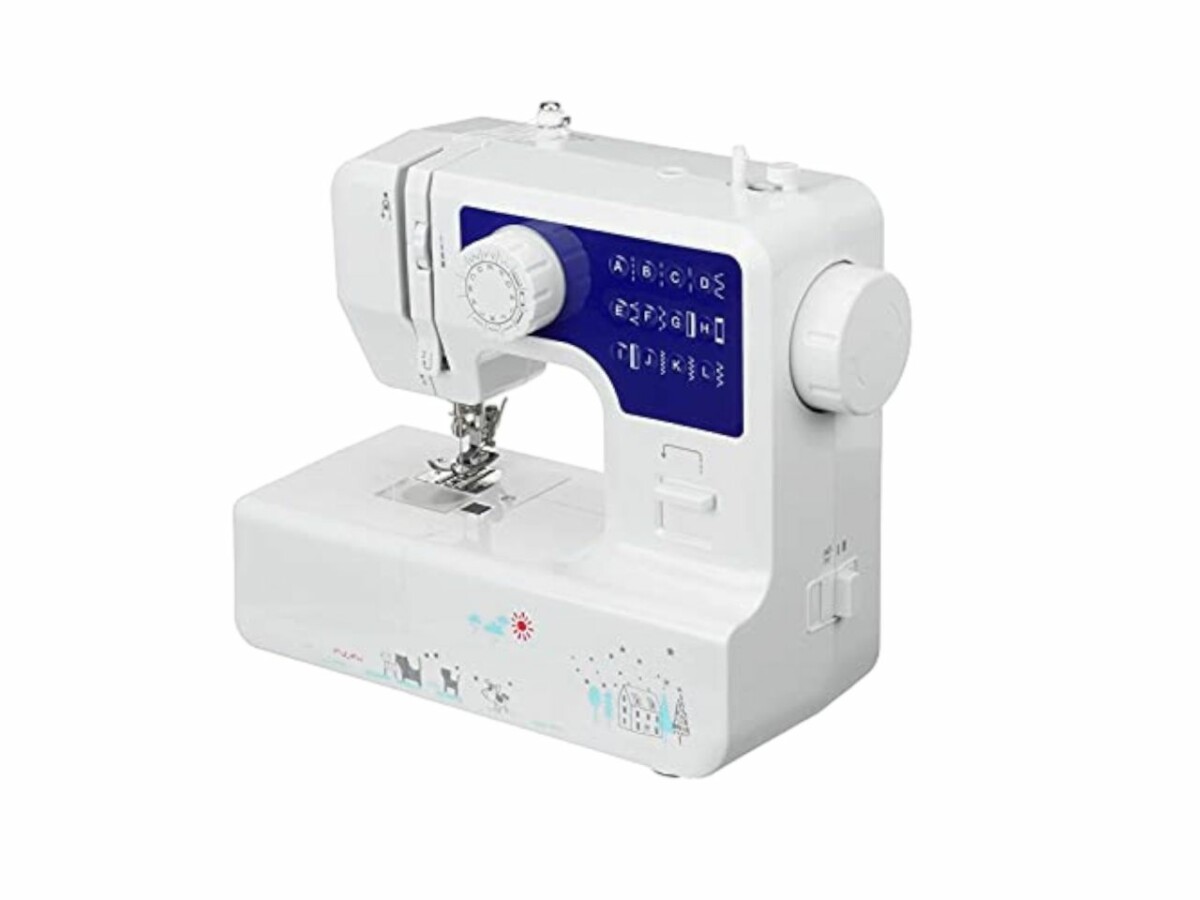Ever find yourself pondering if you can take your cherished sewing machine with you on your next flight? Well, you’re in for a treat! We’re about to deep-dive into the complex world of flying with your reliable gadget.
Whether you’re thinking about securely packing it in your checked baggage or having it as your carry-on, we’ve researched it all. We’ll touch on topics like roll-along cases, safety precautions, and even soft duffel options.
So, buckle up and let’s untangle this web, one stitch at a time. By the time we’re through, you’ll be ready to sew your next masterpiece while cruising at 30,000 feet!
Can I Bring a Sewing Machine on a Plane?
Yes, but typically it will need to be checked luggage. Make sure to pack it securely to avoid any damage. Don’t forget to review the airline’s baggage policies and consider insuring your sewing machine if it’s valuable.
So, you’re thinking about how to lug your sewing machine around in your checked bag, right? You gotta realize, getting the packing right is key if you want your beloved crafty sidekick to arrive in one piece. It’s all about that padding and protection, my friend.
First things first, get rid of the needle, spindles, and spool holders. You don’t need any nasty surprises. Next, swaddle your machine in something super soft and thick. Think of it as a cozy blanket that’ll shield your machine from any bumps or bruises.
Now, let’s talk about the box. It needs to be tough as nails and packed with enough padding to cushion any blows. It’s like your machine’s personal bodyguard.
Oh, and don’t forget to check out the rules of your airline. Some of them are pretty strict when it comes to packing machinery. Don’t want to end up at the airport with a bag that’s a no-go, do you?
Packing right isn’t just about being careful. It’s a matter of respecting your craft. After all, your sewing machine isn’t just any tool, it’s an extension of your creative spirit. So treat it with the care it deserves!
The Feasibility of a Carry-On Sewing Machine: Experiences Shared
Check out these genius hacks fellow globetrotters have used to lug their sewing machines onto planes. It’s not just possible, it’s actually pretty handy at times. Despite the odds of hauling a machine on a plane, they’ve tackled it head-on.
- Safety First, Always: One savvy jet-setter wrapped her machine in a padded duffel bag, ensuring it was as cozy as a bug in a rug.
- On-the-Go Ease: Another traveler opted for a wheeled machine case, fitting it snugly into the overhead locker. Talk about mobile convenience!
- Weighing the Pros and Cons: Yet another one mulled over the idea of shipping her sewing machine, but chose to carry it instead for her week-long workshop. Now that’s commitment!
Each of these stories reflects the fierce dedication these seamsters have for their craft. They’re not just navigating the intricate world of fabrics and patterns, but also the testing trials of travel.
The Advantages of Using a Rolling Machine Case for Air Travel
When you’re ready to jet off with your sewing machine in tow, having a rolling machine case can totally change your travel game.
This handy case isn’t just about saving your prized possession from the usual knocks and jolts of traveling, but also about ensuring it cozily fits in most overhead compartments, no stress.
It’s a savvy travel solution that understands your passion for your craft and makes sewing on the move feel as simple as pie.
Case’s Protective Features
For sure, if you’re into air travel with your sewing machine, a rolling machine case is a game changer. It’s perfect for stowing your gear safely in the overhead bin. The best part? It’s tough as nails. It can take a hit, and won’t complain about being moved around a lot.
Here’s why you should definitely think about getting one:
- Chill out: No more stress about your expensive equipment. It’s safe, snug, and secure.
- Easy Peasy: It’s got wheels, so you can zip through the airport without breaking a sweat.
- Multi-tasking star: Great for storage and transport, so it’s a two-for-one deal.
But hey, a rolling machine case isn’t your only option. You could also go for a padded duffel bag or a hard shell suitcase. Just bear in mind, it’s all about keeping your sewing machine out of harm’s way.
Overhead Compartment Compatibility
When it comes to practicality and ease, there’s no denying that a wheeled sewing machine case is a game changer for air travel, fitting like a glove in the overhead compartment. It’s specifically designed to match the typical dimensions of overhead lockers, so you can rest assured your treasured sewing machine will fit without a hitch.
But don’t forget, not all planes are created equal, so it’s a smart move to check out the airline’s weight limits before you fly. With a wheeled case, you’ll breeze through airports like a pro, conserving your stamina for your upcoming sewing projects. You get the best of both worlds with protection and mobility.
The case safeguards your machine from the rough and tumble of travel, while the wheels facilitate smooth, speedy navigation. You’re a sewing enthusiast on the go, and a wheeled sewing machine case is perfectly in sync with your active way of life. Don’t let travel put a damper on your love for sewing.
Essential Safety Precautions When Packing a Sewing Machine for Travel
Alright, so you’re about to hit the road and you’re taking your sewing machine with you. It’s super important to be mindful of a few safety tips before you start packing.
First off, get rid of any potential hazards. I’m talking about sharp stuff like needles, spindles and even those spool holders – you really don’t want to risk damaging your machine or worse, hurting yourself.
Now, let’s talk about how to pack it. A padded duffel bag or a specialized rolling case for sewing machines is your best bet. It’s like creating a cozy, cushioned nest for your beloved machine, keeping it safe and secure. Plus, it’ll totally ease your mind knowing it’s well-protected.
Removing Sharp Components
Before hitting the road with your sewing machine, there are a few things you’ve gotta do to ensure it’s packed safely – not just for you, but for everyone else too. It’s a bit like prepping a car for a long journey, but with a lot more needles and thread.
First up, the needle. It’s sharp as heck and could easily puncture your protective bag or case. The last thing you want is a surprise acupuncture session while rummaging in your luggage. So, best to remove it and prevent any unexpected pricks.
Next, the spindles. These little guys are easy to misplace or damage in transit, so it’s a good idea to pack them separately. It’s like when you pack your jewelry and end up with a tangled mess, but this time, it’s your sewing machine parts.
And then we’ve the spool holders. Keep in mind, tension isn’t just bad for humans; it’s also bad for your thread path during transportation. So, do them a favor and take them off.
Need an alternative to lugging your sewing machine around? Consider shipping it ahead of time or renting one when you get there. It’s all about making the journey less of a hassle and more of a breeze.
Packing in Duffel Bag
Alright, so you’re all set to hit the road with your sewing machine, yeah? Cool, but before that, let’s get one thing straight – you gotta ditch any sharp bits. We don’t want any nasty surprises, right?
Now, let’s talk packing. Not just any packing, but the kind that keeps your machine safe from all those bumps and thumps.
Now, you’re gonna want to wrap your machine in some seriously protective stuff. Bubble wrap’s great, or a nice, thick quilt will do the trick. Make sure it’s snug as a bug, and then tape that baby up. We’re talking Fort Knox levels of secure here.
What’s next? The bag. Now, if your duffel bag’s more flimsy than padded, you might want to rethink your options. A hard-shelled suitcase could be a solid alternative. You gotta think about placement too. Don’t just shove it in any old spot – you want to reduce the chance of your machine getting crushed or taking a tumble.
And hey, don’t forget about the cords and pedals. They need to be packed separately in a small pouch so you can get to them easily. No one wants to be digging around for them when they need ’em, right?
Lastly, label your bag. Make it clear. You don’t want anyone mistaking it for their bag of dirty laundry or something.
Using Rolling Machine Case
Stepping up your packing game is a piece of cake when you switch to a rolling machine case. It’s like a superhero shield for your sewing machine, especially when you’re traveling. The genius part about these cases is the convenience they offer. You can just roll your machine around, no sweat, instead of breaking your back carrying that heavy thing.
These rolling cases aren’t just about convenience though, they’re also about safety. They come with a bunch of protective features that can put your mind at ease. We’re talking:
- Cushioned walls that act like a shock absorber,
- Straps that are like seatbelts for your sewing machine,
- Tough as nails material that can handle anything travel throws at it.
And the cherry on top? These cases are also your dream come true for staying organized. With a designated spot for everything, you can whip up your portable sewing workspace in no time.
Using a Soft Duffel Bag for Carry-On: A Practical Approach
If you’re thinking about using a soft duffel bag as your carry-on for your sewing machine, you’ve got to weigh the pros and cons of it. Sure, it’s super easy to carry around and it’s got enough room to fit your precious sewing machine comfortably. But you’ve got to think about the protection it offers too.
Compared to other carry-on options, a soft duffel bag definitely has the edge because it’s got that extra padding that’s a total game-changer when you’re packing something as delicate as a sewing machine. It’s not just about throwing your machine in the bag and calling it a day. You’ve got to be smart about it.
Think about the sensitive parts of your machine. If you pad them up with a towel or something, it can save them from getting messed up during the travel. And don’t forget to take out the needle and secure any parts that might move around a lot.
If you pack your sewing machine with a bit of thought and care, it’ll arrive at its destination without a scratch and ready to work its magic whenever you need it. And let’s be honest, that’s exactly what we all want, right?
Evaluating the Need to Carry a Sewing Machine Based on Workshop Duration
Heading to a quick workshop for just a couple of days? Lugging that sewing machine along might feel like a total drag. But, hold up. If you’re signing up for a longer gig that’s going to run for weeks, having your own machine can totally be a game-changer.
While you’re trying to decide whether to pack up your sewing machine or not, here’s what you need to think about:
- What’s the Deal with the Project?: If the workshop is going to dive into some seriously tricky sewing techniques that need certain features on the machine, you’re going to want your own trusted sewing buddy by your side.
- Will I Get My Hands on a Machine?: Is the workshop going to have machines ready for you? If it’s a no, or if you’re just super picky about your sewing machine (no shame in that), you’re going to have to roll with your own.
- What About Shipping?: Depending on how long and where this workshop is, you might want to think about mailing your machine over beforehand. It could be way easier on your wallet and save the struggle of hauling it around.
At the end of the day, remember it’s all about you being comfy and letting your creative juices flow. So, take your time and make the right call!
Wrapping Up
Wrapping up this article, it’s clear that carrying a sewing machine on a plane isn’t as tricky as you might think. But hey, man, let’s not dissipate the party talk here. There’s a whole bunch more that’s intriguing about sewing machines you probably want to catch on.
Did you know, for instance, it can actually take things to a whole new level by sewing leather on a regular sewing machine? Just, wow! If that doesn’t plant a big question mark on your face, I don’t know. C’mon, you don’t always have to stick to the mainstream, right?
And let’s not forget the unsung heroes here – the universal sewing machine tables. Ever wondered if your beast could sit on any table? It might be a lot universal than you imagine. Splendid, isn’t it?
That ain’t all, just want to hit hard on this one. While we are at it, you might forget to consider the safety. Yeah, it’s still a machine, and sewing machines can potentially be dangerous if you don’t learn to play by its rules. So, make sure to buckle up!
So, the plane’s journey with your sewing machine may not be a pain, but remember, there’s a bigger world out there worth exploring. Stay stoked!
I graduated from London College of Fashion, and I’ve been working for a Fashion Design company for 10 years. My other hobbies are going to the gym and reading.








